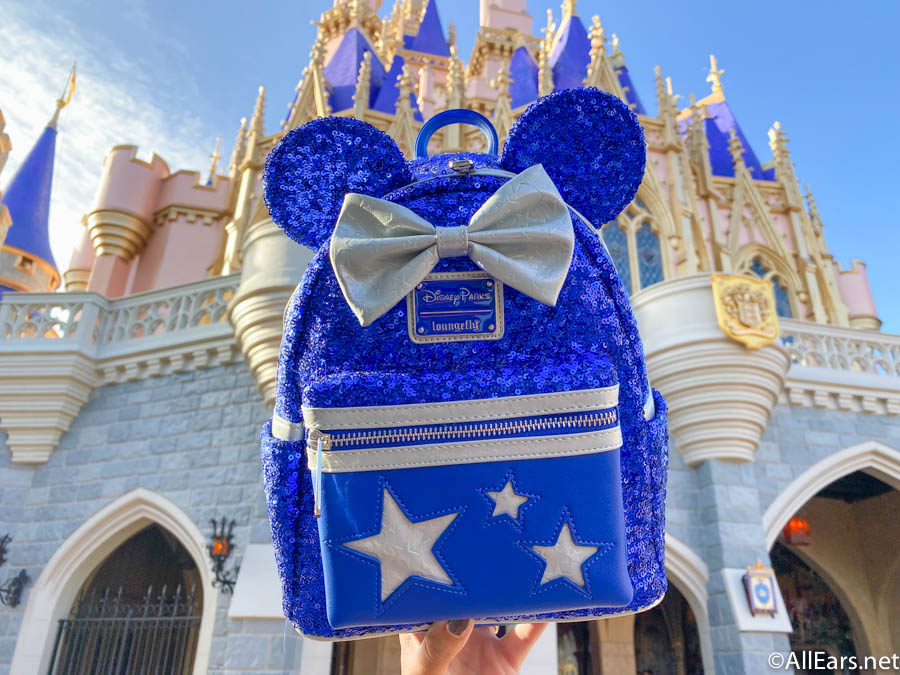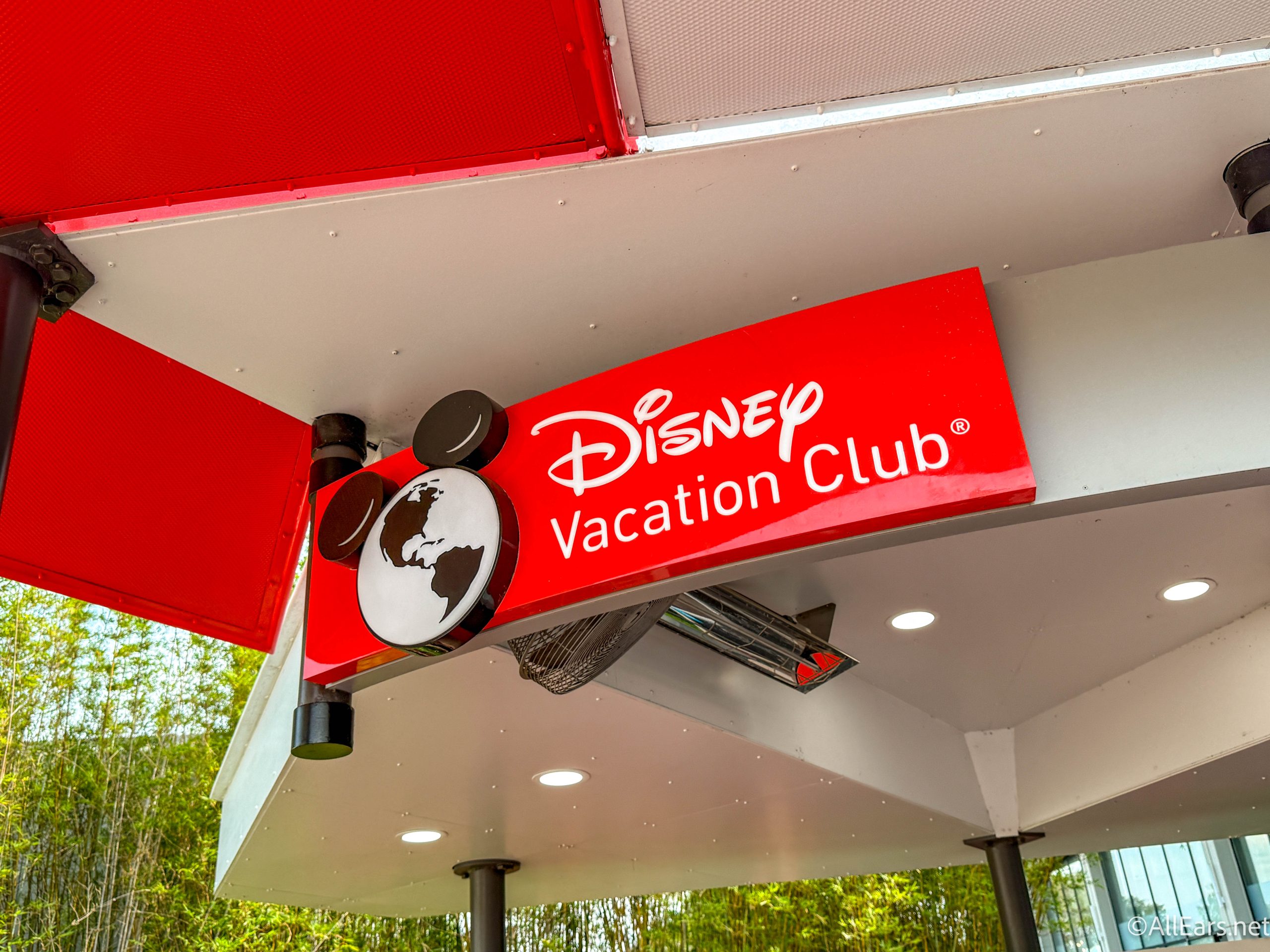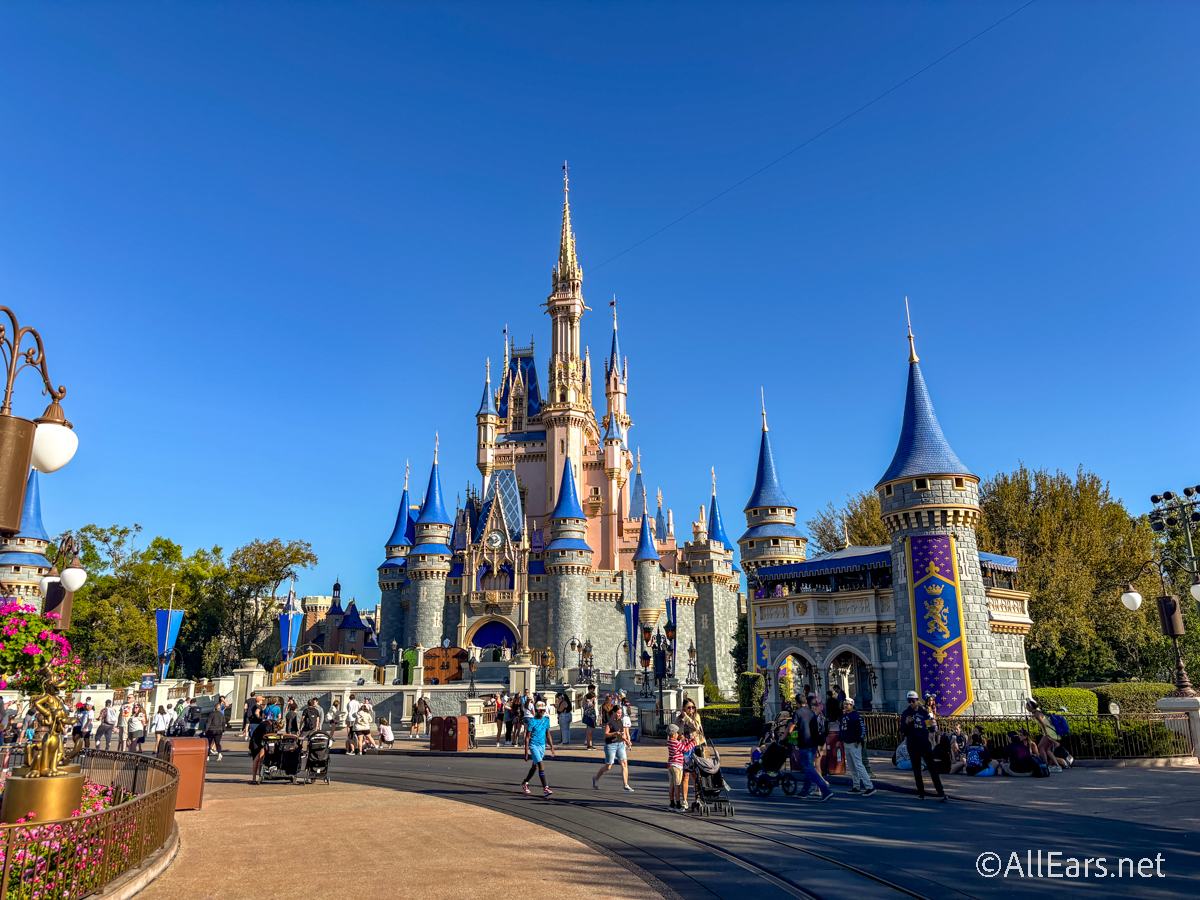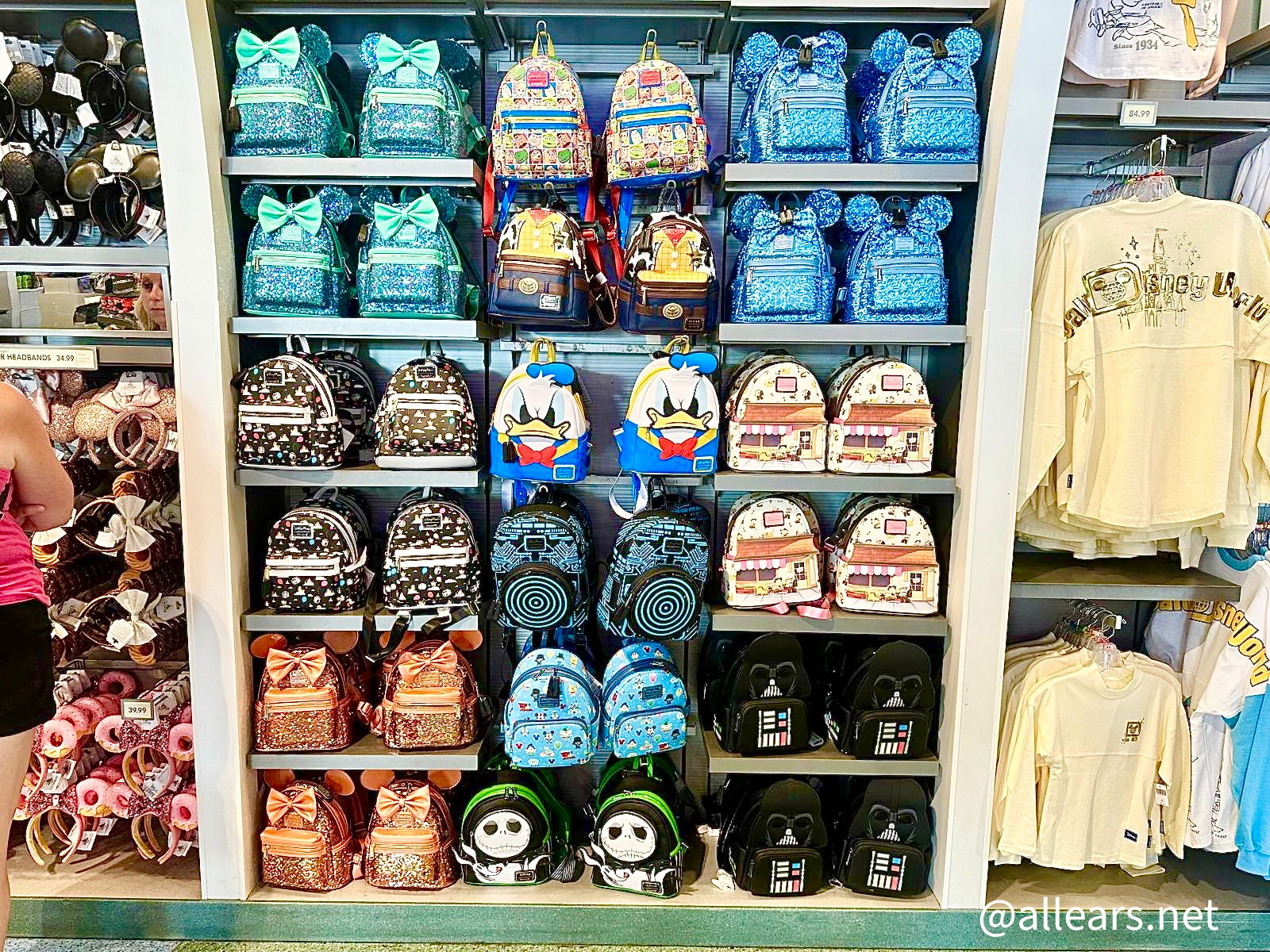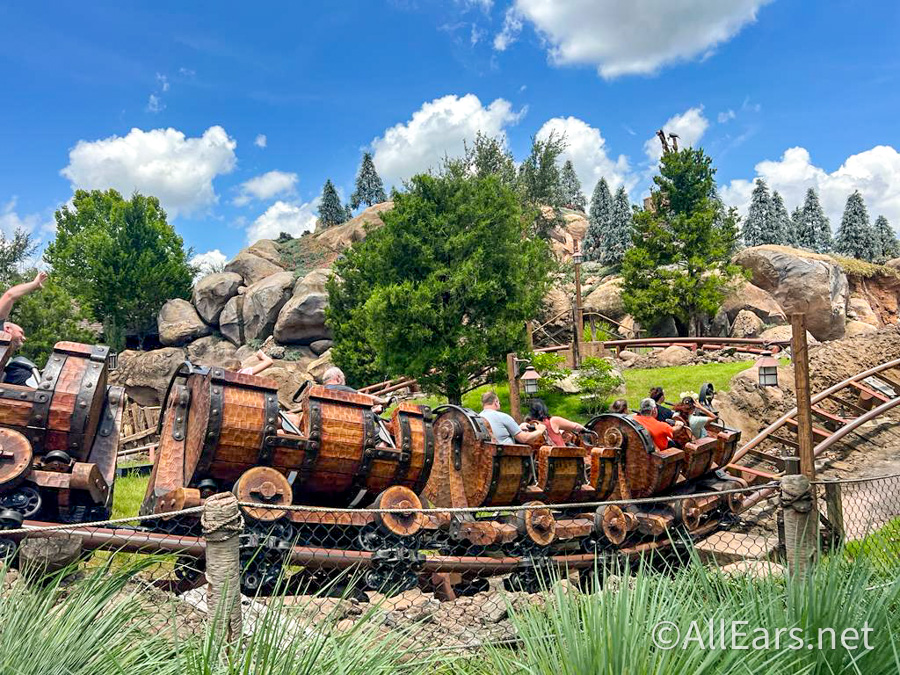Walt Disney World Chronicles: Year One Magic Kingdom’s Original Main Street
by Jim Korkis
Disney Historian
Feature Article
This article appeared in the April 19, 2011 Issue #604 of ALL EARS® (ISSN: 1533-0753)
The Walt Disney World Magic Kingdom is very different from Disneyland especially in terms of tone and culture, not just attractions or their location. Imagineer Tony Baxter once tried to describe the difference by suggesting that Disneyland is an "intimate experience," but that the Magic Kingdom was a "spectacular experience."
In California, the three-quarters scale (getting smaller at each upper level) quaint and quiet Main Street is inspired by Walt Disney's rose-colored memories of Marceline, Missouri, as well as physical examples of architecture such as City Hall, influenced specifically by Imagineer Harper Goff's childhood in Fort Collins, Colorado.
Main Street U.S.A. in Florida is a much different location that represents a larger, more prosperous turn-of-the-century East Coast town. For instance, the Main Street Train Station's design resembles a similar upscale turn-of-the-century station that existed in Saratoga Springs, New York. The architecture at the crossroads of Main Street and Center Street showcases turn-of-the-century New Orleans (with its ornate balconies), New England (with a widow's walk), Chicago and New York City (with neo-classical columns).
There are some similarities between the two Main Streets, including Walt Disney's philosophy of what he wanted the Main Street location in a Disney park to represent.
Walt stated, "Here is the America of 1890-1910, at the crossroads of an era, where the gas lamp is gradually being replaced by the electric lamp; the plodding, horse-drawn street car is giving way to the chugging 'horseless carriage.' America was in transition: the discoveries of the late 19th Century were beginning to affect our way of life. Main Street represents the typical small town in the early 1900s — the optimism of America."
The bright color palette on the buildings, unlike the duller color that would have been on actual buildings at the turn of the century, helps suggest that spirit of optimism.
Imagineer Emile Kuri, a principal designer for both the California and Florida Main Streets, won an Academy Award for his work on the Paramount movie "The Heiress" (1949). Part of the filming was done at an 1840 New York mansion in Washington Square. The owner was so grateful for the care Kuri demonstrated to the property that he gave the designer the antique hitching post in front of the house. Kuri placed it in the front yard of his own home in Corona del Mar, California, and used it as the model for the hitching posts at both Disneyland and the Magic Kingdom. Of course, horses have never been hitched on the streets at either parks, but if there were no hitching posts, the illusion of the streets being authentic turn-of-the-century would not be complete.
Kuri made a trip to Baltimore, Maryland, in 1955 to purchase some old gas lampposts that the city was replacing that were then nearly 160 years old. "They were the only lamp posts I could find that would match the less-than-full scale design of Main Street," stated Kuri. Some of the Magic Kingdom Main Street lamp posts were made from the molds of those vintage lamp posts as well. However, there are also some very distinct differences between the two Main Streets.
Instead of Disneyland's famed Opera House, the Magic Kingdom has what is now called the Town Square Exposition Hall. When the Magic Kingdom opened in 1971, that beautiful building was officially the elegant Main Street Hotel that housed the Gulf Hospitality Center. The legendary Dorothea Redmond had created concept art for the possibility of building an actual upscale Victorian hotel on Main Street that would have utilized the space now used for cast parking behind the building as hotel rooms.
"Etched glass doors, potted palms, comfortable velvet settees and antique chairs set the mood for relaxation and comfort," claimed the 1972 "Gulf Personal Tourguide (sic) to Walt Disney World," describing the Hospitality Center.
In 1971, this beautiful building was the unofficial central location for all of Walt Disney property, where guests could make reservations for resort rooms, dinner shows, golfing and other recreational activities. The large, polished wooden counter was primarily staffed by friendly and attractive young women who extolled the virtues of Gulf Oil, of course, and handed out maps and brochures that assisted guests with driving routes, places to visit in Central Florida and selecting hotels or motels at which to stay on their trip.
It was the only full-sized building on Magic Kingdom's Main Street (all other buildings are approximately seven-eighths scale) because it was necessary to block the guests' view of the Contemporary resort, which would have conflicted with the theme of Main Street. The Contemporary was still clearly visible in Tomorrowland because it had a vaguely futuristic look that didn't detract from the "world of the immediate future" theme.
Next door was not Tony's Restaurant but the Town Square Cafe, sponsored by Oscar Mayer from 1971-1981. At this location, guests would meet the affable George Molchan, who portrayed the diminutive spokesman, Little Oscar, handing out the iconic wiener whistles to children and chatting in a friendly manner with guests as they dined on a variety of offerings, including Oscar Mayer hot dogs.
Both Coca-Cola and Pepsi-Cola were offered on the menu as well as a Monte Cristo sandwich. Molchan who portrayed Little Oscar longer than the nine other men who wore the little chef's hat over the years worked at the Town Square Cafe for the decade Oscar Mayer sponsored the location and is still well remembered for his kindness and positive outlook.
On Main Street, an "A" ticket was required for a one-way trip to the Hub on the Omnibus (a double-decker bus that would later be moved to Epcot Center's World Showcase), the Horse Trolley (pulled by Percheron and Belgian draft horses that were shod in plastic rather than steel to make it easier on their hooves, and that only worked three or four hours a day before enjoying the rest of their time at the stables at Fort Wilderness) and other Main Street vehicles like the fire engine, the jitney and the "horseless carriages." These gas-powered vehicles were fitted out with Jeep transmissions and special mufflers to make the putt-putting sound.
The Main Street Cinema, however, required a slightly more expensive "B" ticket. The Main Street Cinema was not a shop, but an air-conditioned space surrounded by five movie screens showing excerpts from "Dr. Jekyll and Mr. Hyde" (1920), "The Great Train Robbery" (1903), "Crashing Through" (1928), "The Rounders" (1914 — starring comedians Charlie Chaplin and Fatty Arbuckle as two drunks and their misadventures) and "Steamboat Willie" (1928 — the first synchronized sound Mickey Mouse animated short). There was a raised carpeted and hand-railed platform in the middle of the room where guests could stand and enjoy the flickering images surrounding them.
Some of the shops on Main Street in 1971 would disappear within a decade, including Wonderland of Wax (candle shop), The Greenhouse Flower Shop (West Center Street), Tobacconist (with its distinctive Cigar Store Indian), The Cup 'n' Saucer (china shop), New Century Clock Shop, and the Art Festival on East Center Street.
The Main Street Emporium (proprietor Osium "Osh" Popham was the character played by Burl Ives in the Disney film "Summer Magic" who ran the early 1900s general store) was expanded over the years, resulting in the loss of West Center Street with its facades for the Livery Stable, Champion Cyclery and the Chinese Laundry, as well as displacing the Hallmark Card Shop and the original location of the Harmony Barber Shop.
The barber shop sold both right- and left-handed mugs, which many guests assumed were simply souvenir shaving mugs. Closer inspection would reveal that the interior of the mug had a narrow ceramic strip that went the length of the mug. The mugs were actually marvelous re-creations of mustache mugs, used at the turn of the century so a gentleman's mustache remained dry while drinking.
An authentic brass luggage and coat rack from a 1900s railway passenger car still decorates the interior of the shop today. The shop was sometimes the source for guest dissatisfaction because it included a 1912 cash register that did not allow guests to use a credit card to pay for their haircut.
The 1995 creation of the Main Street Athletic Company store replaced the much-missed Penny Arcade (which featured not only vintage mechanical machines like the Kiss-O-Meter, strength testers, fortune teller and delightful mutoscopes that provided entertainment for spare change, but also several of the paintings used for the original film in the Hall of Presidents), House of Magic (known as much for its display of monster masks as the demonstration of magic tricks) and the Main Street Book Store.
The Main Street Fire Station (with the outside lettering proclaiming "Engine Company No. 71" referring to the opening of the park in 1971) was originally the home for the fire engine that transported guests to the Hub and back before the area became a full time gift shop by 1993.
There was even more delight in walking right down the middle of Main Street U.S.A. in 1971 than today. Someone once made the comment that Walt Disney's Main Street USA at Disneyland was "just the way it used to be."
Walt looked at the person and quietly corrected him, "No, it's not. It's the way it should have been." As with so many of Walt's other dreams, Florida's Magic Kingdom expanded on that concept in 1971.
=-=-=-=-=-=-=–=-=-=-=-=-=-=-=-=-=-=
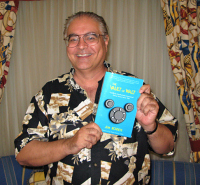 ABOUT THE AUTHOR: Jim Korkis is an internationally respected Disney Historian who has written hundreds of articles about all things Disney for more than three decades. He is the author of the popular recently published book The Vault of Walt, which contains nearly 40 chapters of untold Disney stories. As a former Walt Disney World cast member, his skills and historical knowledge were utilized by Disney Entertainment, Imagineering, Disney Design Group, Yellow Shoes Marketing, Disney Cruise Line, Disney Feature Animation Florida, Disney Institute, WDW Travel Company, Disney Vacation Club and many other departments.
ABOUT THE AUTHOR: Jim Korkis is an internationally respected Disney Historian who has written hundreds of articles about all things Disney for more than three decades. He is the author of the popular recently published book The Vault of Walt, which contains nearly 40 chapters of untold Disney stories. As a former Walt Disney World cast member, his skills and historical knowledge were utilized by Disney Entertainment, Imagineering, Disney Design Group, Yellow Shoes Marketing, Disney Cruise Line, Disney Feature Animation Florida, Disney Institute, WDW Travel Company, Disney Vacation Club and many other departments.
Read more about the The Vault of Walt: http://astore.amazon.com/debsunoffiwaltdi/detail/0615402429
-o-o-o-o-o-o-o-o-o-o-o-
Editor's Note: This story/information was accurate when it was published. Please be sure to confirm all current rates, information and other details before planning your trip.


